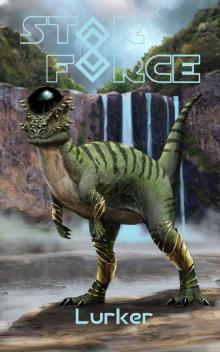 Lurker
Lurker Whitmore Day
Whitmore Day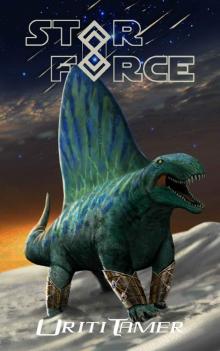 Uriti Tamer
Uriti Tamer The Powers That Be
The Powers That Be Star Force: Captains Mint (Star Force Universe Book 70)
Star Force: Captains Mint (Star Force Universe Book 70) Point Zero
Point Zero Star Force: Temple Wars
Star Force: Temple Wars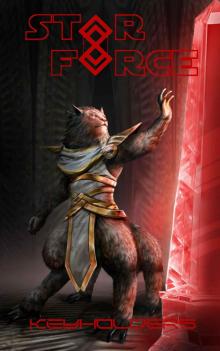 Star Force: Keyholders (Star Force Universe Book 61)
Star Force: Keyholders (Star Force Universe Book 61) Enlightenment
Enlightenment Star Force: Legacy of the Ancients (Star Force Universe Book 59)
Star Force: Legacy of the Ancients (Star Force Universe Book 59) First Contact Fallout
First Contact Fallout Star Force- Atonement
Star Force- Atonement Carnage
Carnage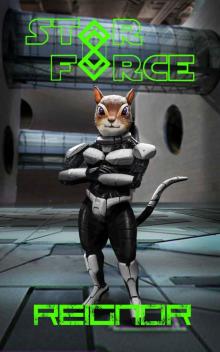 Reignor
Reignor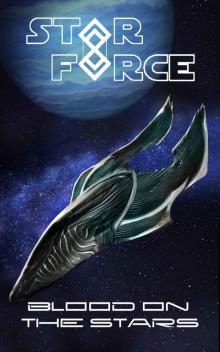 Blood on the Stars
Blood on the Stars Star Force: Death Mark (Star Force Universe Book 67)
Star Force: Death Mark (Star Force Universe Book 67) Star Force: Galactic Empire Revealed (Star Force Universe Book 63)
Star Force: Galactic Empire Revealed (Star Force Universe Book 63) Vargemma
Vargemma Maty
Maty Star Force: Capitulation (Star Force Universe Book 73)
Star Force: Capitulation (Star Force Universe Book 73) Star Force: Phoenix (Star Force Universe Book 62)
Star Force: Phoenix (Star Force Universe Book 62) Star Force: Atonement (Star Force Universe Book 68)
Star Force: Atonement (Star Force Universe Book 68) Death Mark
Death Mark Star Force: Penance (SF49)
Star Force: Penance (SF49) Star Force: Headstrong (SF72)
Star Force: Headstrong (SF72)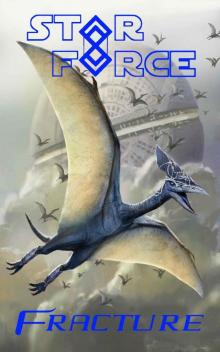 Star Force: Fracture (Star Force Universe Book 47)
Star Force: Fracture (Star Force Universe Book 47) Star Force: Eviction (SF33)
Star Force: Eviction (SF33) Star Force: Secession (SF13)
Star Force: Secession (SF13)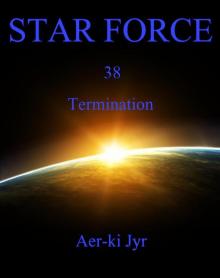 Star Force: Termination (SF38)
Star Force: Termination (SF38) Star Force: Origin Series Box Set (1-4)
Star Force: Origin Series Box Set (1-4) Gateways
Gateways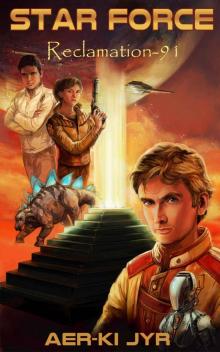 Star Force: Reclamation (SF91) (Star Force Origin Series)
Star Force: Reclamation (SF91) (Star Force Origin Series) Star Force: Excalibur (Star Force Universe Book 41)
Star Force: Excalibur (Star Force Universe Book 41) Star Force: Symbiosis (Star Force Universe Book 72)
Star Force: Symbiosis (Star Force Universe Book 72) Star Force: Origin Series Box Set (25-28)
Star Force: Origin Series Box Set (25-28)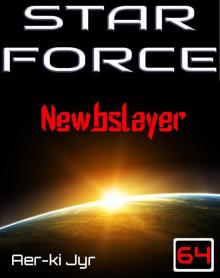 Star Force: Newbslayer (SF64)
Star Force: Newbslayer (SF64)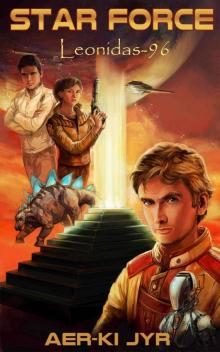 Star Force: Leonidas (SF96) (Star Force Origin Series)
Star Force: Leonidas (SF96) (Star Force Origin Series) Star Force: Origin Series Box Set (9-12)
Star Force: Origin Series Box Set (9-12) Star Force: Ysalamir (Star Force Universe Book 54)
Star Force: Ysalamir (Star Force Universe Book 54) Star Force: Starchaser (SF69)
Star Force: Starchaser (SF69) Star Force: Inception (SF1)
Star Force: Inception (SF1)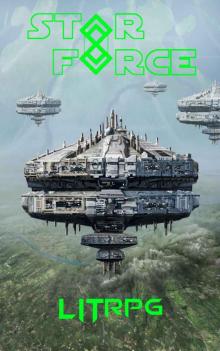 Star Force: LITrpg (Star Force Universe Book 64)
Star Force: LITrpg (Star Force Universe Book 64) Star Force: Psionics (SF29)
Star Force: Psionics (SF29) Star Force: Essence (Star Force Universe Book 51)
Star Force: Essence (Star Force Universe Book 51)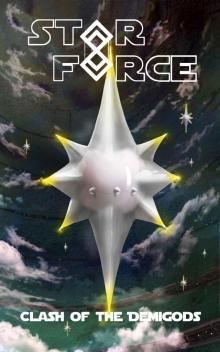 Star Force: Clash of the Demigods (Star Force Universe Book 60)
Star Force: Clash of the Demigods (Star Force Universe Book 60) Star Force: Zen'zat (SF14)
Star Force: Zen'zat (SF14) Star Force: Ice Queen
Star Force: Ice Queen Metamorphosis
Metamorphosis Star Force: Revision (SF78)
Star Force: Revision (SF78) Star Force: Recalibration (SF30)
Star Force: Recalibration (SF30)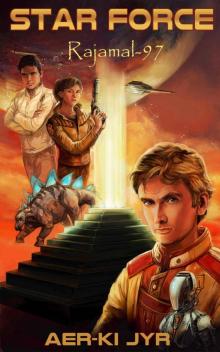 Star Force: Rajamal (SF97) (Star Force Origin Series)
Star Force: Rajamal (SF97) (Star Force Origin Series)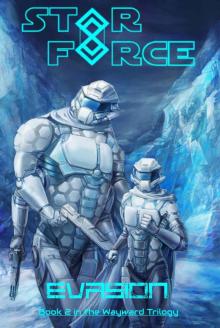 Star Force: Evasion (Wayward Trilogy Book 2)
Star Force: Evasion (Wayward Trilogy Book 2) Star Force: Mastermind (SF32)
Star Force: Mastermind (SF32) Star Force: Excursion (SF46)
Star Force: Excursion (SF46) Star Force: Deception (SF11)
Star Force: Deception (SF11) Star Force: Cascade (SF73)
Star Force: Cascade (SF73) Star Force Perseverance (SF81) (Star Force Origin Series)
Star Force Perseverance (SF81) (Star Force Origin Series)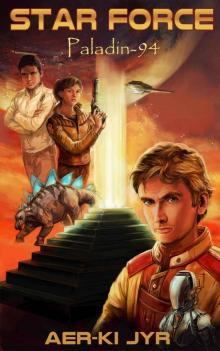 Star Force: Paladin (SF94) (Star Force Origin Series)
Star Force: Paladin (SF94) (Star Force Origin Series) Star Force: Revelation (SF79)
Star Force: Revelation (SF79)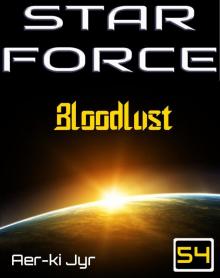 Star Force: Bloodlust (SF54)
Star Force: Bloodlust (SF54) Star Force: Instinct (Star Force Universe Book 49)
Star Force: Instinct (Star Force Universe Book 49) Star Force: Intimidation (SF17)
Star Force: Intimidation (SF17)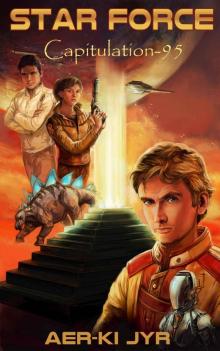 Star Force: Capitulation (SF95) (Star Force Origin Series)
Star Force: Capitulation (SF95) (Star Force Origin Series)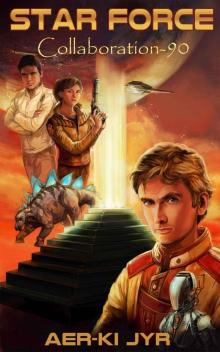 Star Force: Collaboration (SF90) (Star Force Origin Series)
Star Force: Collaboration (SF90) (Star Force Origin Series) Star Force: Mak'to'ran (4)
Star Force: Mak'to'ran (4) Star Force: Unification (SF39)
Star Force: Unification (SF39) Star Force: Origin Series Box Set (37-40)
Star Force: Origin Series Box Set (37-40) Star Force: Fabrication (SF7)
Star Force: Fabrication (SF7) Star Force: Marauders (SF63)
Star Force: Marauders (SF63) Star Force: Ringworld (SF80)
Star Force: Ringworld (SF80) Star Force: Earth Evacuation
Star Force: Earth Evacuation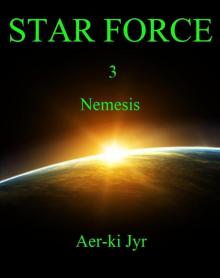 Star Force: Nemesis (SF3)
Star Force: Nemesis (SF3) Star Force: Ambrosia (SF6)
Star Force: Ambrosia (SF6)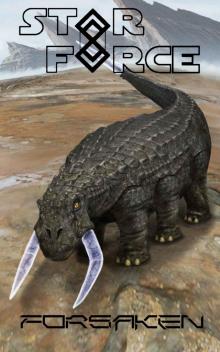 Star Force_Forsaken
Star Force_Forsaken Star Force: Return to Earth
Star Force: Return to Earth Star Force: Knighthood (SF36)
Star Force: Knighthood (SF36) Star Force: Bahamut (SF86) (Star Force Origin Series)
Star Force: Bahamut (SF86) (Star Force Origin Series) Star Force: Integration (SF2)
Star Force: Integration (SF2) Star Force: Benefactor (SF19)
Star Force: Benefactor (SF19) Star Force: Revulsion (SF70)
Star Force: Revulsion (SF70) Star Force: Divide (SF76) (Star Force Origin Series)
Star Force: Divide (SF76) (Star Force Origin Series)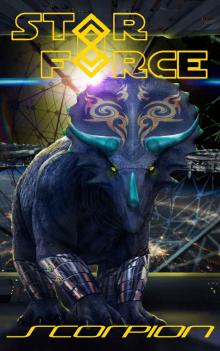 Star Force: Scorpion (Star Force Universe Book 42)
Star Force: Scorpion (Star Force Universe Book 42)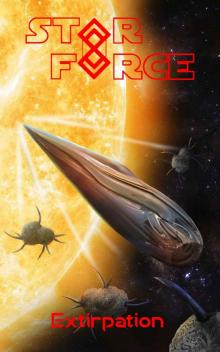 Star Force: Extirpation (Star Force Universe Book 56)
Star Force: Extirpation (Star Force Universe Book 56) Star Force: Shiva (SF98) (Star Force Origin Series)
Star Force: Shiva (SF98) (Star Force Origin Series) Star Force: Origin Series Box Set (5-8)
Star Force: Origin Series Box Set (5-8) Star Force: Disarmament (SF10)
Star Force: Disarmament (SF10) Star Force: Escalation (SF12)
Star Force: Escalation (SF12) Star Force: Nexus (SF57)
Star Force: Nexus (SF57) Star Force: Gemini (SF5)
Star Force: Gemini (SF5) Star Force: Augmentation (SF22)
Star Force: Augmentation (SF22) Star Force: Mettle (SF9)
Star Force: Mettle (SF9) Star Force: Rammus (SF83) (Star Force Origin Series)
Star Force: Rammus (SF83) (Star Force Origin Series)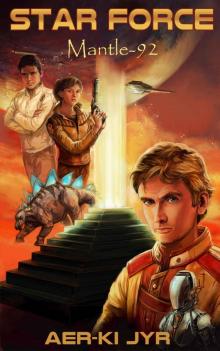 Star Force: Mantle (SF92) (Star Force Origin Series)
Star Force: Mantle (SF92) (Star Force Origin Series) Star Force: Perquisition
Star Force: Perquisition Star Force: Upgrades (SF41)
Star Force: Upgrades (SF41) Star Force: Rift
Star Force: Rift Star Force: Mak'to'ran (5)
Star Force: Mak'to'ran (5) Star Force: Consensus (SF43)
Star Force: Consensus (SF43) Star Force: Ascension (SF27)
Star Force: Ascension (SF27) Star Force: Axius (SF47)
Star Force: Axius (SF47) Star Force: Canderous (SF16)
Star Force: Canderous (SF16) Star Force: Insurrection (SF28)
Star Force: Insurrection (SF28) Star Force: Mak'to'ran (1)
Star Force: Mak'to'ran (1) Star Force: Backstab (SF23)
Star Force: Backstab (SF23) Star Force: Hamoriti (SF62)
Star Force: Hamoriti (SF62) Star Force: Flashpoint (SF8)
Star Force: Flashpoint (SF8) Star Force: Aquatics (SF31)
Star Force: Aquatics (SF31) Star Force: Divergent (SF74)
Star Force: Divergent (SF74) Star Force: Origin (SF24)
Star Force: Origin (SF24) Star Force 75: Resistance
Star Force 75: Resistance Star Force: Summit (Star Force Universe Book 44)
Star Force: Summit (Star Force Universe Book 44) Star Force: Baron (Star Force Universe Book 43)
Star Force: Baron (Star Force Universe Book 43) Star Force: Mak'to'ran (2)
Star Force: Mak'to'ran (2) Star Force: Trials (SF68)
Star Force: Trials (SF68) Star Force: Origin Series Box Set (13-16)
Star Force: Origin Series Box Set (13-16) Star Force: Persistent Ravage (Wayward Trilogy Book 3)
Star Force: Persistent Ravage (Wayward Trilogy Book 3)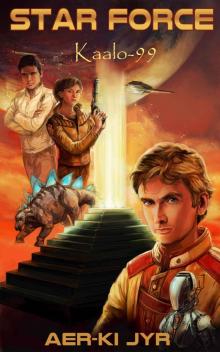 Star Force: Kaalo (SF99) (Star Force Origin Series)
Star Force: Kaalo (SF99) (Star Force Origin Series) Star Force: Counterstrike (SF18)
Star Force: Counterstrike (SF18) Star Force: Foothold (SF25)
Star Force: Foothold (SF25) Star Force: Sav (SF51)
Star Force: Sav (SF51) Star Force: Veracious (SF48)
Star Force: Veracious (SF48) Star Force: Allegiance (SF21)
Star Force: Allegiance (SF21) Star Force: Resistance (SF75)
Star Force: Resistance (SF75) Star Force: Deceit (SF34)
Star Force: Deceit (SF34) Star Force: Lost Destiny (Wayward Trilogy Book 1)
Star Force: Lost Destiny (Wayward Trilogy Book 1)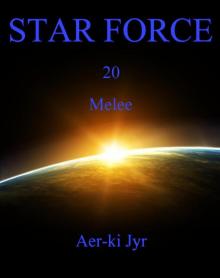 Star Force: Melee (SF20)
Star Force: Melee (SF20)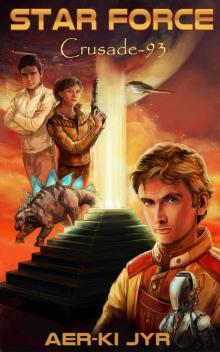 Star Force: Crusade (SF93) (Star Force Origin Series)
Star Force: Crusade (SF93) (Star Force Origin Series) Star Force: Scruples (SF37)
Star Force: Scruples (SF37) Star Force: Trailblazer (SF4)
Star Force: Trailblazer (SF4) Star Force: Commando (SF40)
Star Force: Commando (SF40) Star Force: Retribution (SF60)
Star Force: Retribution (SF60) Star Force: Relocation (SF44)
Star Force: Relocation (SF44) Star Force: Dominance (Star Force Universe Book 50)
Star Force: Dominance (Star Force Universe Book 50) Star Force: Death Knell (SF26)
Star Force: Death Knell (SF26) Apex
Apex Star Force: Paradigm (SF35)
Star Force: Paradigm (SF35) Star Force: Origin Series (17-20)
Star Force: Origin Series (17-20) Star Force: Mak'to'ran (3)
Star Force: Mak'to'ran (3) Star Force: Colonization (SF15)
Star Force: Colonization (SF15) Star Force: Battlemeld (SF45)
Star Force: Battlemeld (SF45)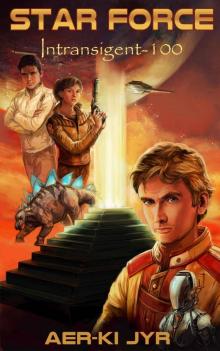 Star Force: Intransigent (SF100) (Star Force Origin Series)
Star Force: Intransigent (SF100) (Star Force Origin Series) Star Force: Shame (SF59)
Star Force: Shame (SF59) Star Force: Origin Series Box Set (33-36)
Star Force: Origin Series Box Set (33-36) Star Force: Zealot (SF87) (Star Force Origin Series)
Star Force: Zealot (SF87) (Star Force Origin Series) Star Force: The Admiral
Star Force: The Admiral Star Force: Empire (SF58)
Star Force: Empire (SF58) Star Force: Origin Series Box Set (29-32)
Star Force: Origin Series Box Set (29-32) Star Force 82 Hradeiti (SF82) (Star Force Origin Series)
Star Force 82 Hradeiti (SF82) (Star Force Origin Series) Star Force: Forsaken (Star Force Universe Book 48)
Star Force: Forsaken (Star Force Universe Book 48) Star Force: Origin Series Box Set (21-24)
Star Force: Origin Series Box Set (21-24) Star Force: Resurrection (SF84) (Star Force Origin Series)
Star Force: Resurrection (SF84) (Star Force Origin Series)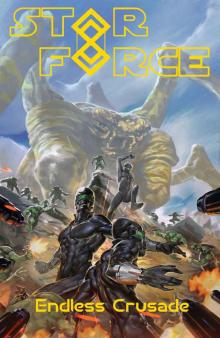 Star Force: Endless Crusade
Star Force: Endless Crusade Star Force: The Dinosaur War (Star Force Universe Book 45)
Star Force: The Dinosaur War (Star Force Universe Book 45)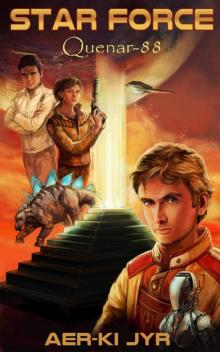 Star Force: Quenar (SF88) (Star Force Origin Series)
Star Force: Quenar (SF88) (Star Force Origin Series) Star Force: Intellect (SF85) (Star Force Origin Series)
Star Force: Intellect (SF85) (Star Force Origin Series)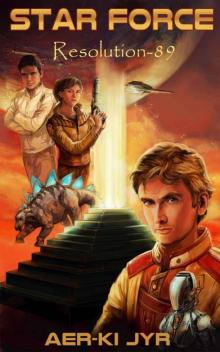 Star Force: Resolution (SF89) (Star Force Origin Series)
Star Force: Resolution (SF89) (Star Force Origin Series) Star Force: Probe (SF42)
Star Force: Probe (SF42) Star Force: Rescue (SF71)
Star Force: Rescue (SF71) Star Force: Evacuation (SF50)
Star Force: Evacuation (SF50) Star Force: Survivor (SF52)
Star Force: Survivor (SF52)